

Utopian Pharmacology. MDMA / Ecstasy and beyond. UTOPIAN PHARMACOLOGY Mental Health in the Third Millennium MDMA and Beyond.
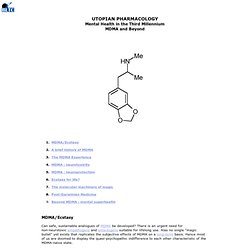
Jonathan Ott. Jonathan Ott (born 1949 in Hartford, Connecticut) is an ethnobotanist, writer, translator, publisher, natural products chemist and botanical researcher in the area of entheogens and their cultural and historical uses, and helped coin the term "entheogen".[1] Writings[edit] Ott has written eight books, co-wrote five, and contributed to four others, and published many articles in the field of entheogens.

He has collaborated with other researchers like Christian Rätsch, Jochen Gartz, and the late ethnomycologist R. Long-term cannabis use may blunt the brain's motivation system. Long-term cannabis users tend to produce less dopamine, a chemical in the brain linked to motivation, a study has found.
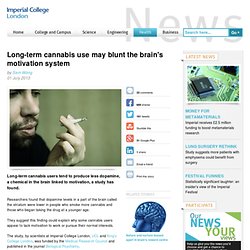
Researchers found that dopamine levels in a part of the brain called the striatum were lower in people who smoke more cannabis and those who began taking the drug at a younger age. They suggest this finding could explain why some cannabis users appear to lack motivation to work or pursue their normal interests. The study, by scientists at Imperial College London, UCL and King’s College London, was funded by the Medical Research Council and published in the journal Biological Psychiatry.
PET scan showing dopamine in thestriatum (orange) Neurodevelopment: Unlocking the brain. Growing up in the suburbs of New York City, Takao Hensch learned German from his father, Japanese from his mother and English from the community around him.
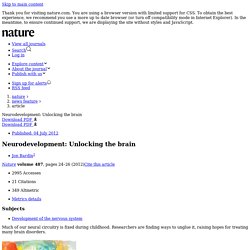
“I was always wondering,” he says, “what is it that makes it so easy to learn languages when you're young, and so hard once you begin to get older?” Want Perfect Pitch? You Might Be Able To Pop A Pill For That. A Mushroom That Speaks. Puheen Aamu: Jaakko Hämeen-Anttila: "Mummot ottivat oopiumia päivittäiseen kolotukseen" Huperzine A. Huperzine A is a naturally occurring sesquiterpene alkaloid compound found in the firmoss Huperzia serrata[1] and in varying quantities in other Huperzia species, including H. elmeri, H. carinat, and H. aqualupian.[2] Huperzine A has been investigated for its potential as a medicine for helping people with neurological conditions such as Alzheimer's disease, but there is insufficient medical evidence for it to be recommended.
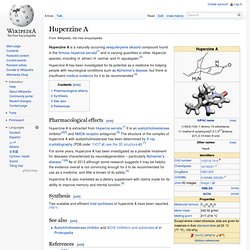
Pharmacological effects[edit] Huperzine A is extracted from Huperzia serrata.[1] It is an acetylcholinesterase inhibitor[4][5] and NMDA receptor antagonist.[6] The structure of the complex of huperzine A with acetylcholinesterase has been determined by X-ray crystallography (PDB code: 1VOT; see the 3D structure).[7] Huperzine A is also marketed as a dietary supplement with claims made for its ability to improve memory and mental function.[9] Synthesis[edit] Two scalable and efficient total syntheses of huperzine A have been reported.[10][11] See also[edit] Can Police Help End the War on Drugs? When police in the German city of Frankfurt surveyed the drug scene 20 years ago, they knew they needed help.
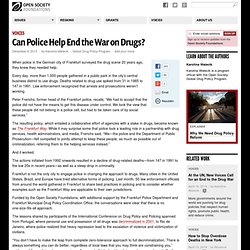
Every day, more than 1,000 people gathered in a public park in the city’s central business district to use drugs. Deaths related to drug use spiked from 31 in 1985 to 147 in 1991. Law enforcement recognized that arrests and prosecutions weren’t working. Peter Frerichs, former head of the Frankfurt police, recalls, “We had to accept that the police did not have the means to get this disease under control. World’s Deadliest Drug: Photos and Video Inside a Krokodil Cookhouse. About a decade ago, Russian doctors began to notice strange wounds on the bodies of some drug addicts—patches of flesh turning dark and scaly, like a crocodile’s—in the hospitals of Siberia and the Russian Far East.
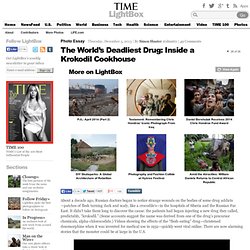
It didn’t take them long to discover the cause: the patients had begun injecting a new drug they called, predictably, “krokodil.” (Some accounts suggest the name was derived from one of the drug’s precursor chemicals, alpha-chlorocodide.) Videos showing the effects of the “flesh-eating” drug—christened desomorphine when it was invented for medical use in 1932—quickly went viral online. There are now alarming stories that the monster could be at large in the U.S. American drug-enforcement officials say fears of an imminent krokodil epidemic are overblown. Sam Gandy - Harnessing Neurogenesis: Psychedelics & Beyond. DocventuresinSuuriSuomalainenHamppututkimus.pdf. Noopept - long-term experience (more than a simple nootropic) - Page 3 - Brain Health - LONGECITY - Page 3. 'JChief', on 25 Jul 2012 - 08:39 AM, said: 'protoject', on 10 Jul 2012 - 11:06 PM, said: Not to be a downer but I'm finding the stuff pretty useless.
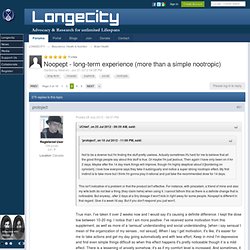
Actually sometimes it's hard for me to believe that all the good things people say about this stuff is true. Or maybe I'm just jealous. Then again I have only been on it for 2 days. This isn't indicative of a problem or that the product isn't effective. True man. There is no effect on my libido. Sometimes there are short term memory/ focus problems, or, this effect where certain things are shuffled into the unconscious part of your mind without really noticing. other people have mentioned this.